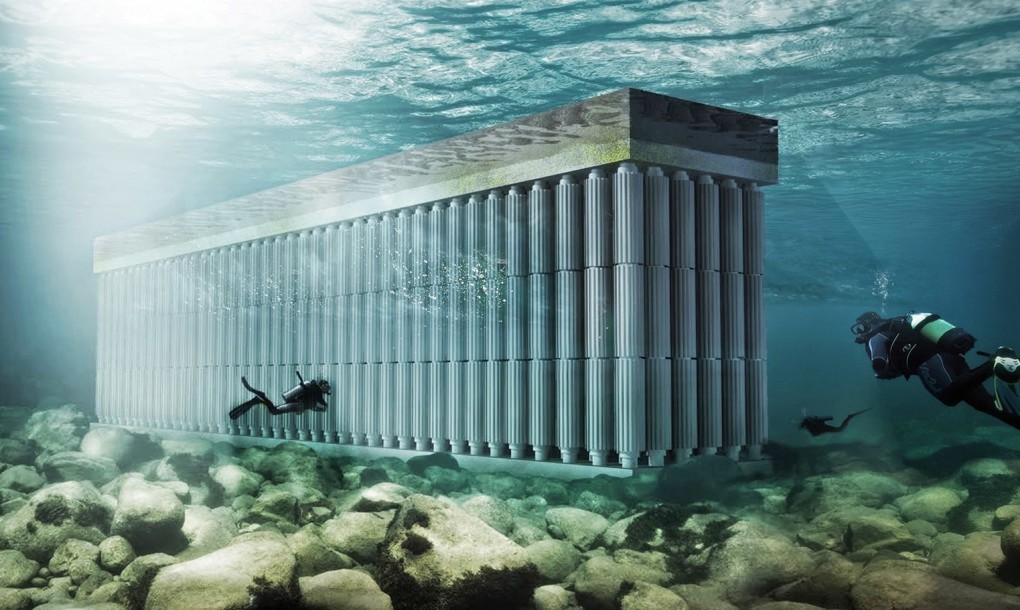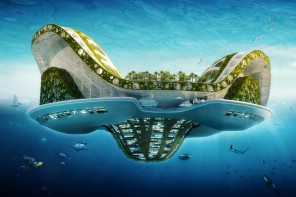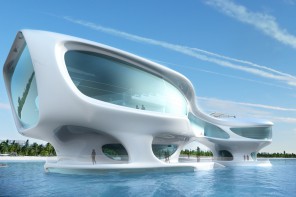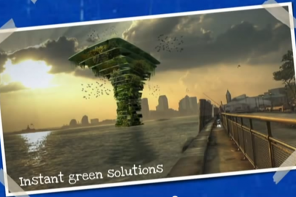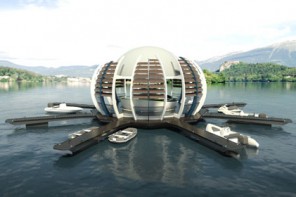Floating Blue Energy
World leaders from nearly 200 countries are in Paris to make a difference in climate change and make a deal to save us and our planet. The aquatec Koen Olthuis and his crew from Waterstudio have come up with a yet another cool solution in the search for a better planet. The Floating Blue energy sea wall is is a floating breakwater, a bit like the one at the port of Monaco. but all the magic of this floating blue energy sea wall happens underwater. It’s called The Parthenon. it not only absorbs the waves like a normal breakwater but it harvests these vast amounts of locked up energy and transforms it into electricity.
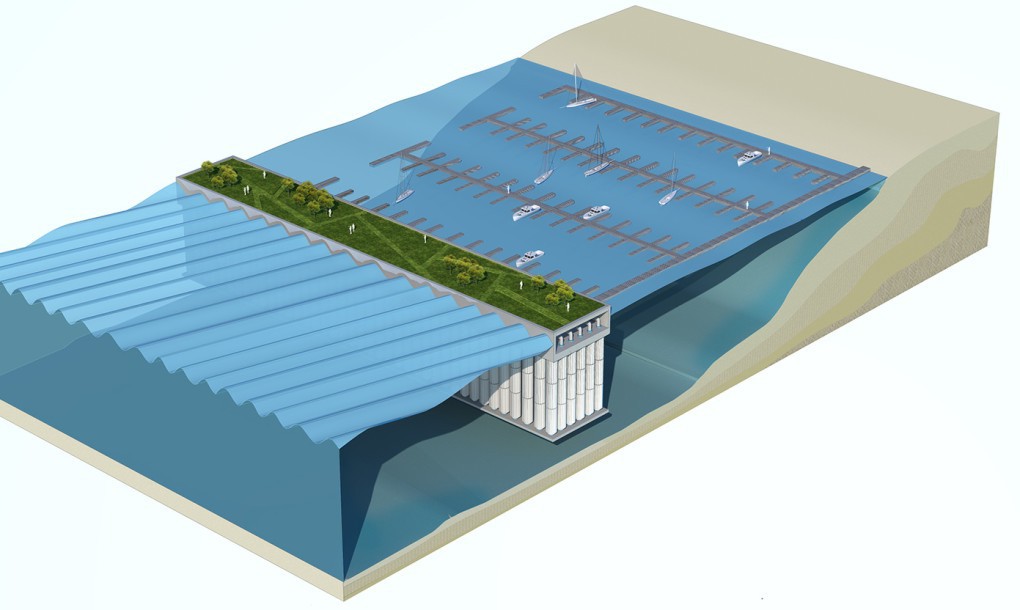
Probably due to the great attention New York waterfont has since storm Sandy, Waterstudio used the Hudson River to illustrate their Blue energy concept. the wave conditions on the Hudson river are so strong that a protecting sea wall is needed to protect the boats inside a harbour. Because of the constant strong currents on the Husdon river the corrosion on these sea walls is fiers.
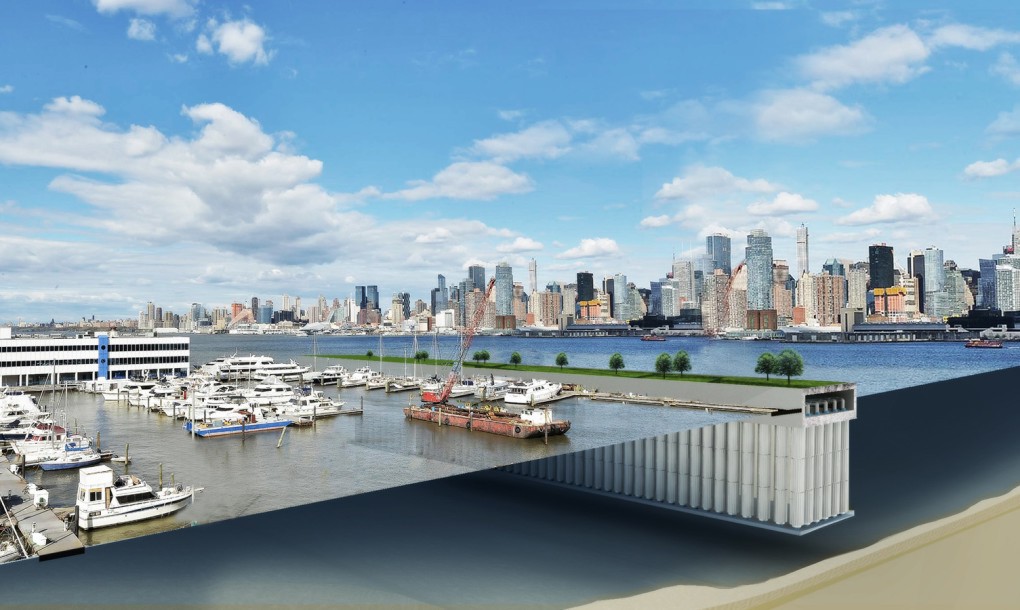
The solution of a floating blue energy system that absorbs this energy makes for green energy and far less corrosion and reducing waves. This means that the Parthenon floating blue energy wall lives with and uses the force of the waves instead of fighting against the forces of nature. One of the key paradigms of Koen Olthuis and the people at Waterstudio

The Parthenon
Build out of concrete the sea wall has 3-foot cylinders that rotate in both directions at a low speed due to the water washing thru them. The energy harvest by the rotation of there cilinders is then transformed into electrical power. The water filled cylinders are light but in balance with the water that is bashing into them. therefore they reduce the waves impact on the harbour. and since they are floating they only need anchors on the riverbed, another scareless design. the topside can be used as an urban space like a boulevard.
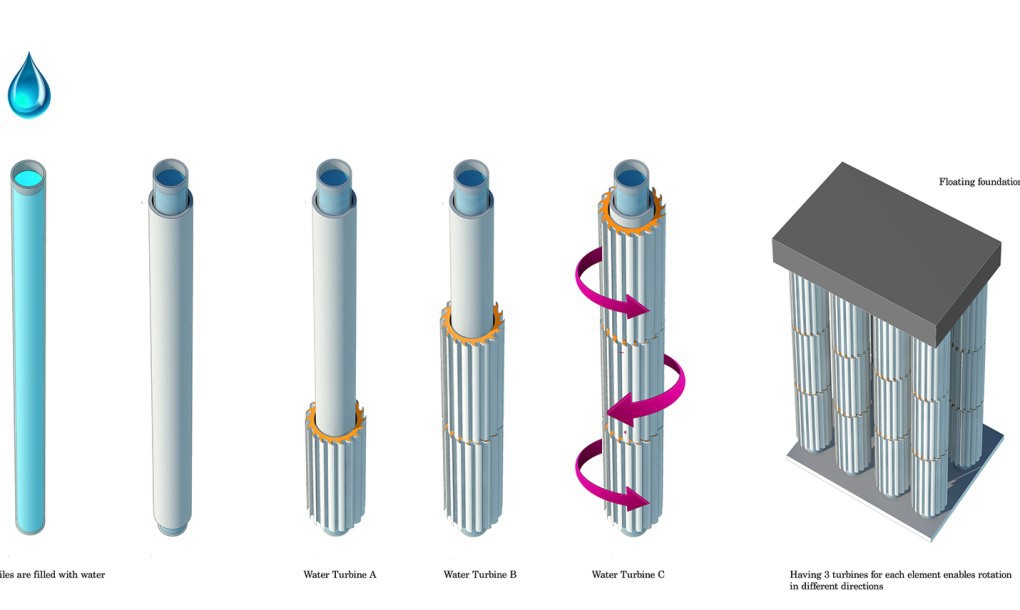
“The Parthenon floating blue energy sea wall resembles the column structure of the famous ancient temple in Greece,” and divers could see it as a part of the sunken city of Atlantis.
this would be a great solution for the outer wall of the first floating city from the Seastading Institute.

